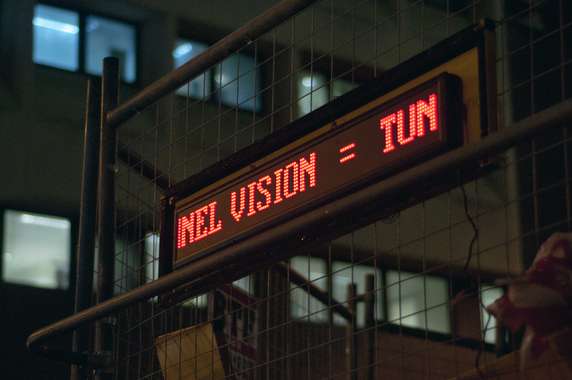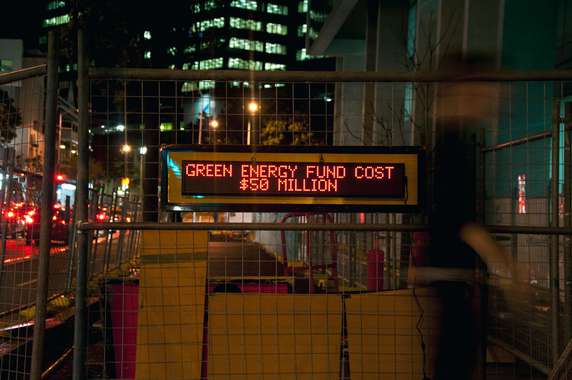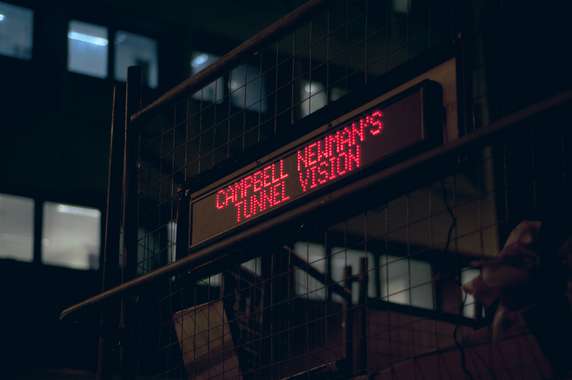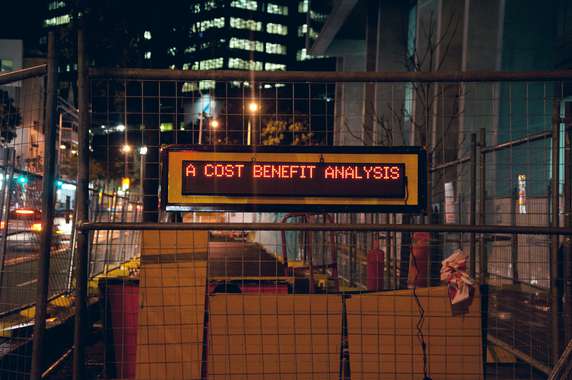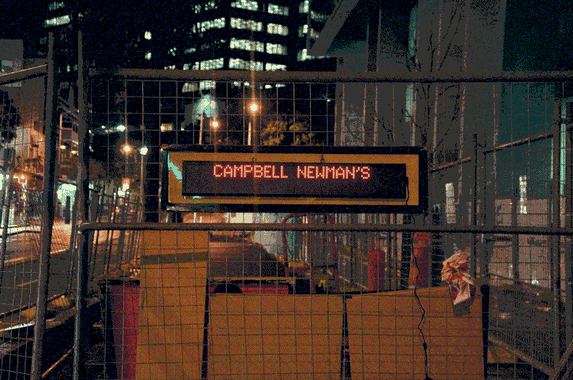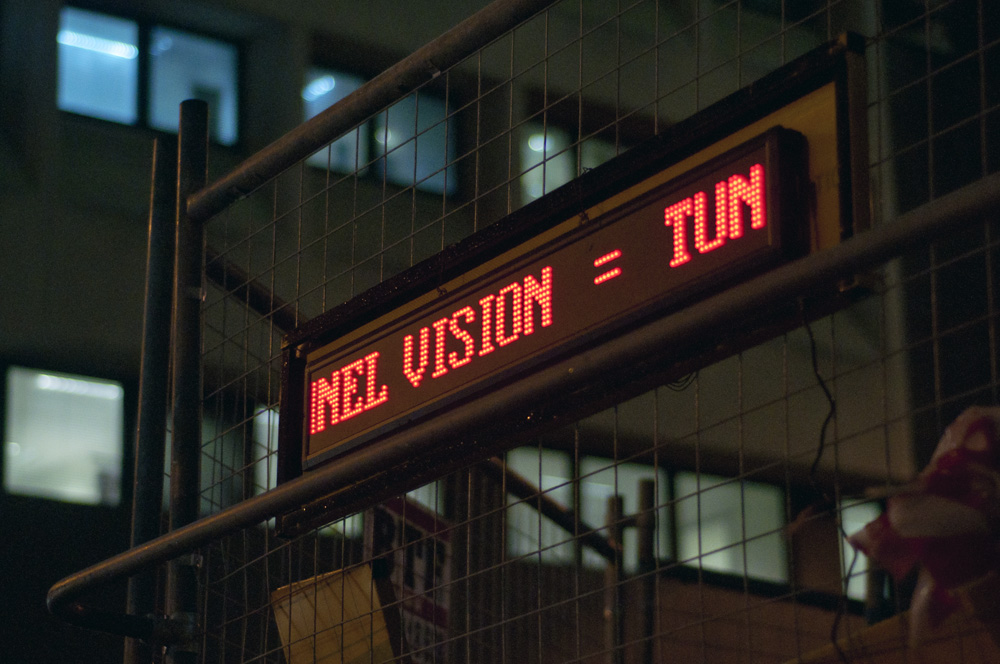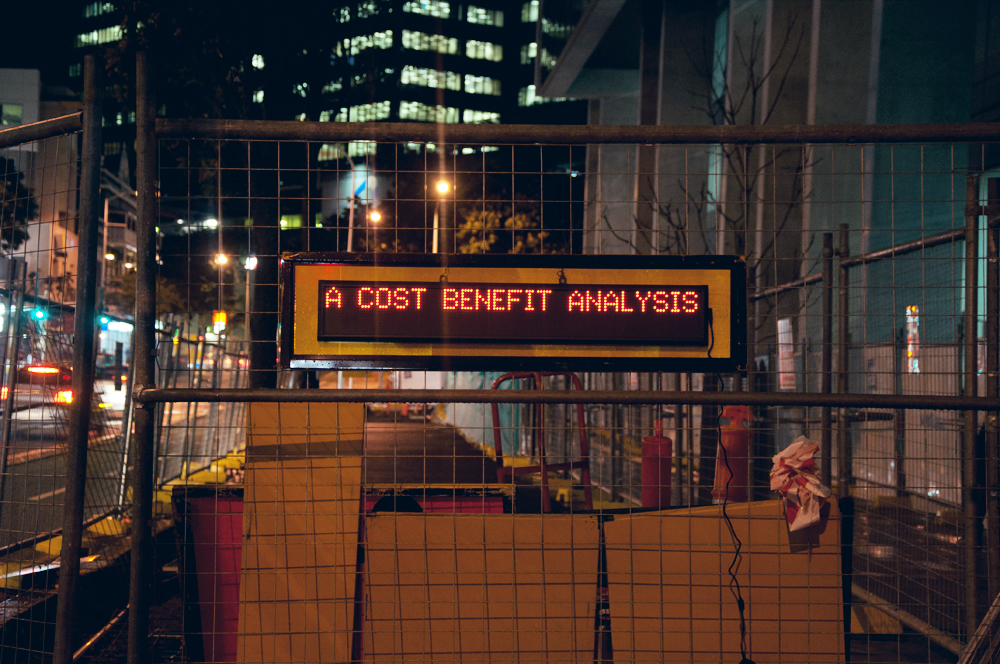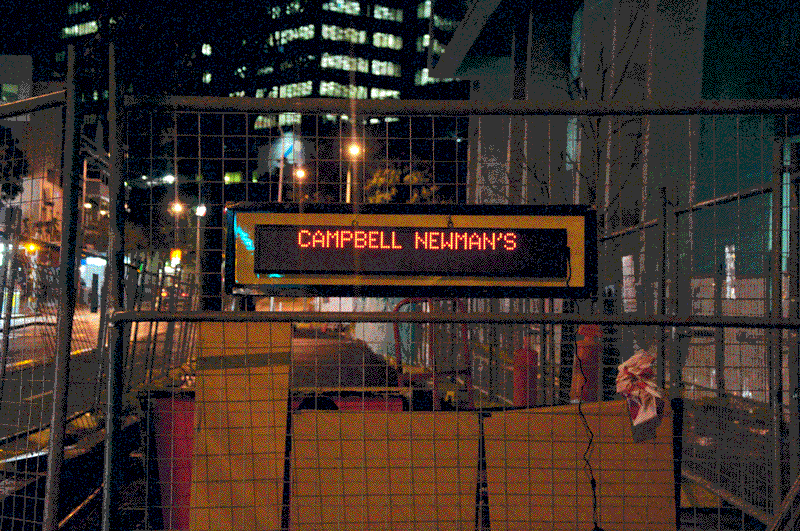Tunnel Vision
by aarongillett
This work has been commented by 4 curator(s). Read the comments
Title
Tunnel Vision
Headline
Campbell Newman's tunnel vision: a cost benefit analysis.
Concept author(s)
Luke Robertson; Gem Copeland; Aaron Gillett
Concept author year(s) of birth
1991; 1989; 1988
Concept author(s) contribution
This project was a joint collaboration.
Concept author(s) Country
Australia
Friendly Competition
Competition category
Visual communication practice
Competition subcategory
moving
Competition field
nonacademic
Competition subfield
professional
Subfield description
We are practicing graphic designers and recent graduates of the Visual Communication course at the Queensland College of Art, Brisbane. Luke works at The Letter D in Fortitude Valley. Aaron works at Josephmark in Petrie Terrace. Gem is currently freelancing and living in London.
Check out the Debt. 2012 outlines of Memefest Friendly competition.
Description of idea
Describe your idea and concept of your work in relation to the festival outlines:
Please view the animated gif.
Tunnel Vision is a response to the idea that debt takes the power from the people and gives it to the people in power, framing the issue in terms of Queensland politics.
Tunnel vision is defined as the tendency to focus exclusively on a single or limited goal or point of view.
The Sunshine State is currently $92.5 billion in debt, a figure that the Liberal National Party plan to reduce by establishing debt management strategies. Unfortunately, in their recent short time in power the party have demonstrated that minority groups are no longer on the agenda. Through minimising economic debt, the party is bankrupting Queensland's social culture by doing away with vital support networks they consider dispensable.
The Campbell Newman-led LNP approach is one that values projects like the Clem 7, a $3.2 billion infrastructure behemoth that saves 8 minutes of commuting time, over Sisters Inside, for example. This $120,000-a-year state-funded service provides counselling and support to women prisoners at the Townsville Correctional Centre, many of them indigenous.
Since its completion, the Clem 7 tunnel has been disastrously unsuccessful, running at just 26% of necessary capacity. The company that constructed it, RiverCity Motorway, has since gone into receivership after being unable to repay its debt.
The LNP approach to Queensland's budget and our society's entrenched system of economic thinking is deeply flawed as cultural and social debt is not accounted for. What kind of society values saving eight minutes of commuting time over the possibility of saving a human life?
What kind of communication approach do you use?
Our approach was to use rhetorical protest, appropriating a portable LED sign which are commonly used to communicate information about roadwork. This creates a quietly subversive and disarming effect on the viewer. This was derived from the signs installed outside the Clem 7 that routinely beg commuters to "give it a go". The language references political sound-bites, news tickers and budgeting terms.
What are in your opinion concrete benefits to the society because of your communication?
Ultimately, Tunnel Vision asks the average Queensland citizen about the true cost of our politics.
The 2012 state election saw the LNP win 78 seats to Labor's seven, the largest majority in Queensland's history. The majority of Queenslanders therefore support this short-sighted political stance. Tunnel Vision seeks to question and expose the short-sightedness of this new government.
What did you personally learn from creating your submitted work?
On a basic level, the gross scale of waste caused by the tunnel as well as the absurdity of the proportions of expenditure.
Why is your work, GOOD communication WORK?
It is succinct and specific to its context. It appropriates the tools and language of government to subvert and question the government. It is economic in its impact: the rhetoric is fairly straightforward but the execution gives it memorability.
Where and how do you intent do implement your work?
The sign is portable, so ideally it will appear and disappear at different roadwork and construction sites in Brisbane.
Did your intervention had an effect on other Media. If yes, describe the effect? (Has other media reported on it- how? Were you able to change other media with your work- how?)
Only time will tell.
Curators Comments

Shoaib Nabi
The approach of rhetorical protest through appropriating a portable LED sign is very effective. It gives an opportunity to appear and disappear from public venues. It can be operating in several places at one time and I agree it can give memorability if effectively used. Your project targeting commuters will certainly create a buzz in the community the outcome of which may only be measurable in the next election, however if one could find a way to record the dissent it could offer valuable data that can reflect public opinion for discourse. On a street one could flash headlights, beep car horn to show their solidarity. Polls can be generated and data could be transmitted directly to these LED's. I am excited to see this implemented and I hope you all are able to find sponsors to promote this so the project does not remain a hypothetical study. I have seen similar executions create quite a buzz in communities. I believe protests at grassroots level generates lasting impressions and when design communication reaches out to the targeted audience it needs to make an impact that is memorable. I think Tunnel Vision has great promise.

Kevin Yuen Kit Lo
This is a simple, practically effective public intervention. I appreciate that it is dealing with a specific, actionable, local issue, and challenges citizens to question the authority and inherent value systems of state spending.
The LED platform is original, and seems to be a great tool to use for future interventions. Placing at construction sites works very well, and I could see many issues of corruption or misspending in infrastructure targeted by this campaign./ I would have liked to have seen video documentation (instead of the gif) of the action, as I wonder if any LED transition effects were used to animate or enhance the message. Timing also seems to be an important element that isn't very well communicated by the GIF.
I also wonder a bit about the structure of the messaging, though perhaps it is because I am not engaged in the local context and am not aware of the programs. I wonder if the amount of information is a bit much for people passing by to catch. Though I think the compare/contrast approach works really well, I wonder if it could have been simplified a bit to more quickly deliver the message.
I'd love to see more interventions using this technique.
Roderick Grant
Urban sites of gentrification, infrastructure, even basic road-works are all likely targets for this type of intervention - and that is its first and greatest strength. The appropriation of an instruction set we expect to give direction or detour information to serve critical ends is well conceived, but needs further iteration to bear greater critical weight. As a proposal for a series of interventions though, this functions very well as a disruption of expectations, conventions and acceptable communication in the urban realm.
The critical language used in this piece owes much to other installation designers and artists - Jenny Holzer, Ben Rubin, Christian Moeller, even the EGD work of Bruce Mau. Though there are obvious limits in terms of financial resources here; the use of multiple LED arrays offers the potential of multiple events simultaneously, either at one site, or distributed through a metropolitan centre. The multiplication of critical voices might add a new sequential or narrative element to a promising start. Michael Rock's Museum of the Ordinary in Manhattan could serve as a useful touch-point for the further development of this project in that sense of multiple sites at operation in sequence.
The formal control offered by the LED array lends authority, veracity and a degree of surveillance to the entire performance. If this affect is achieved through purely visual means, could not the addition of an audio component with similar formal qualities lend further effects?
Its a promising start that has identified some strong relationships between content, form, site and effect.

Jason Grant
I should begin with a disclosure that these participants have been my students.
In spite of its practical limitations (cost, theft etc), this entry deals with the theme of Debt successfully by addressing the specific politics of the participants' personal context.
With the alleged demise of the street poster in the face of online communications, alternative forms of creative public address are critical. Personally, I think printed public media can still be valid and effective. The reach and efficiency of online address is obvious, but it's reception is generally in a private context and mediated by personal technology. The impact of the street poster was/is that it is a shared experience – that is, shared in the flesh, not virtually. The message enters a public space and competes with the intrusion of commercial directives, the built environment, the weather etc. Our bodies negotiate this information, so the potential for engagement remains.
'Tunnel Vision' then is an acknowledgement of these issues – the participants haven't just built a website (although as a complimentary or alternative strategy this may be valid) – they have gone to the physical site of the critique and intervened using a medium and language related to the rhetoric. It's a digital update for the street poster.
And the simple strategy of comparing relatively inexpensive yet important axed social/environmental/arts projects to the funding of massive infrastructure follies is something that the conservative local media never does.
I hope they can keep it up.

